Over the weekend, surrounded by fragrant allium blooms, I harvested the last of last season’s crop—a mix of red, white, and yellow onions that I had grown from seed back in October.
I loved the display of pompom-like flowers, even though onions are not supposed to bolt. (Why is that?)
And out of the hundreds of onions I’d planted, only a handful had bolted.
Which made me wonder… What causes some onions to flower while others do not?
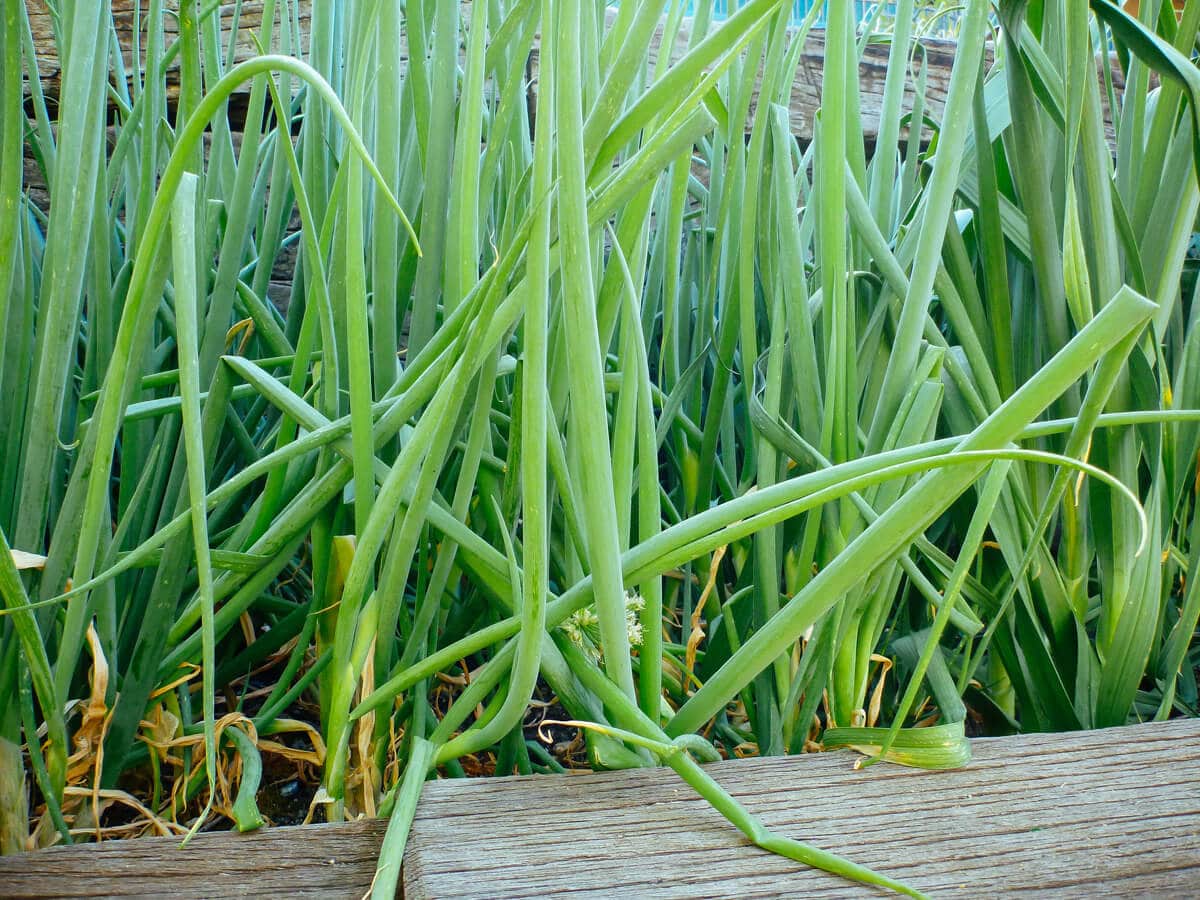
Understanding the life cycle of onions
Onions are biennial plants. They don’t set seed until their second year of growth.
During the first year, the leaves gather energy through photosynthesis and use the energy to develop the bulbs underground.
As autumn rolls around, the leaves wither and the onions go dormant.
We usually harvest onions at the end of their first year, when their leaves start to die back.
But if left in the ground, the bulbs survive on the stored energy throughout winter, and new leaves and roots re-emerge in the spring.
Having gone through the complete growing cycle, onions then send up flower stalks (a process called bolting) and produce seed in this second year.
Even if you’re only growing onions for one season, wide temperature swings can deceive onions into completing their life cycle prematurely.
How the weather can trick an onion into flowering early
If the weather is warm during the early stages, onion seedlings will grow vigorously until cold weather slows their development.
If a cold snap suddenly occurs, the onions will have grown to sufficient size to sustain flowering, and thus be forced into early dormancy.
As the weather warms again and then moves into winter, they may be confused into thinking they’ve already gone through two growing seasons. Just like they’re programmed to do in their second year of life, they prepare to set seed the following spring for the next generation of onions.
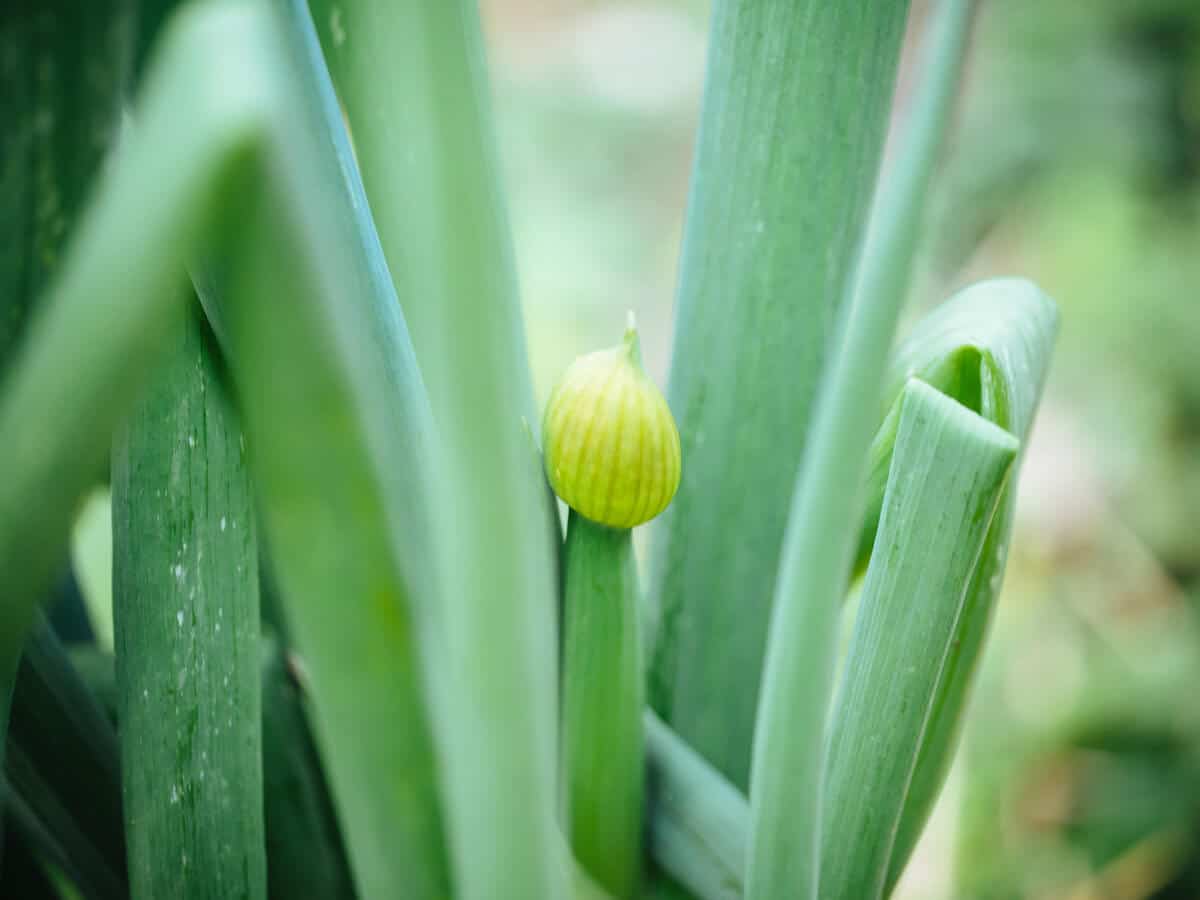
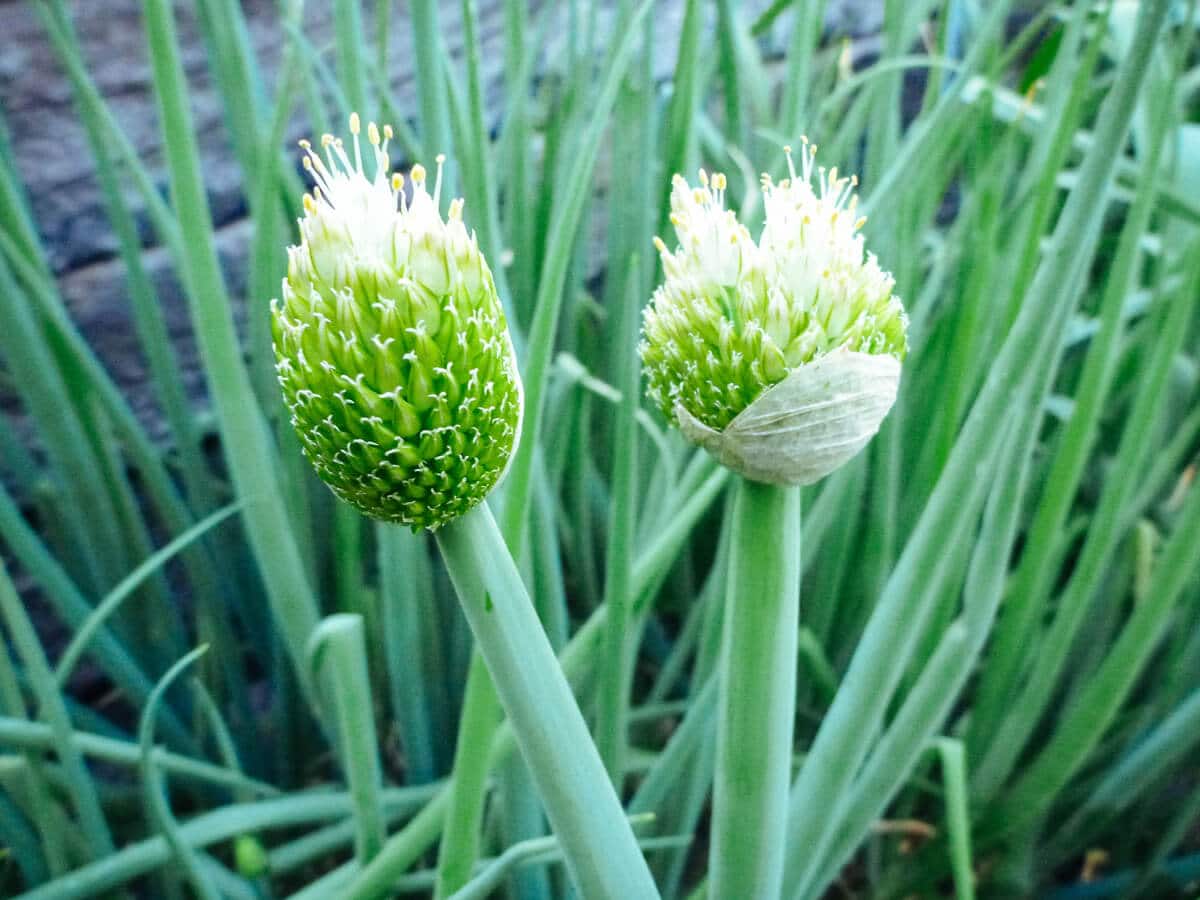
Timing is everything when it comes to planting onions
Young seedlings that are less than the diameter of a pencil by the time temperatures drop aren’t affected by their first winter. Their size isn’t significant enough to realize the cold is upon them and they have to initiate flower stalk production.
If you planted your onions in this sweet spot and the transition from summer to winter is gradual, your onions will develop normally without flowers.
Because of this fine line between seasons, determining the right time to plant onions in your zone is important. (Use my planting calendar—customized for your climate—to find your first and last frost dates and know exactly when you should be starting seeds or transplanting seedlings.)
Plant too soon, and your whole onion crop could flower the following spring as the bulbs will have grown enough to think they’ve completed their cycle after winter.
Plant too late, and you could end up with smaller bulbs, if the delicate seedlings are strong enough to withstand winter at all.
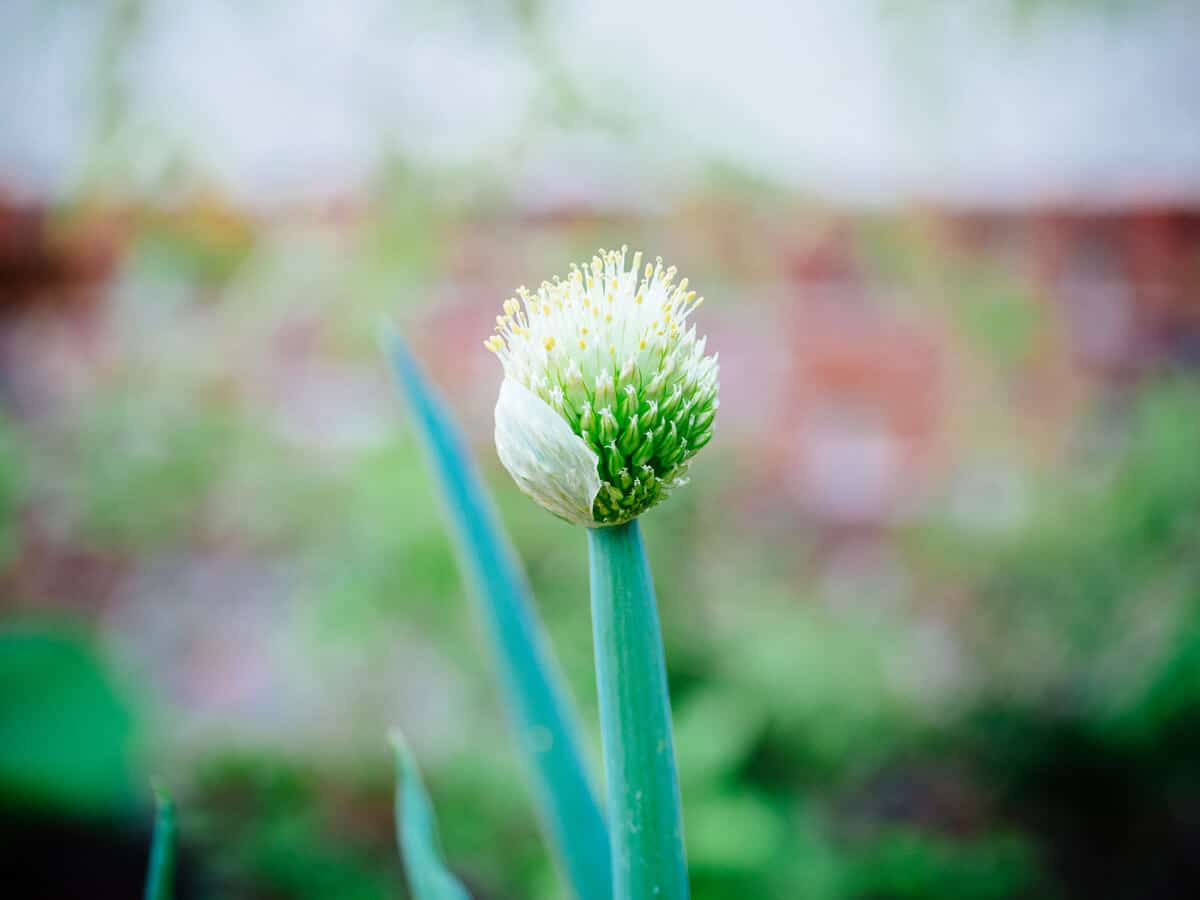
All is not lost after an onion flowers
Once your onions bolt, their bulbs stop growing and their storage capacity diminishes.
Bending over or cutting off the flower stalk won’t re-initiate bulb development. The rigid stalk penetrates the bulb, and after harvest, its early decay causes the entire onion to decay.
That said, onions that have flowered are still edible. Fully developed onions should be cured, the leaves and flower stalk removed, and the bulb eaten within a couple of months.
Even if you find a few of your onions bolting, all is not lost. You can harvest the blossoms to infuse in olive oil or vinegar (the same way you’d infuse an oil with chive blossoms), or use them as a pretty and tasty garnish on your plate.
The flowers (as well as the stems) have a mild onion flavor similar to scallions or leeks. I sometimes snip a few stems to add raw to my salads and sandwiches, or to cook in my omelets and pastas when I want the faint aromatic of an onion. (I use green garlic stems the same way.)
Related: 11 Vegetables You Grow That You Didn’t Know You Could Eat
You can also enjoy the flowers while they last and leave the onions in the ground to collect seed for next season—an unexpected benefit!
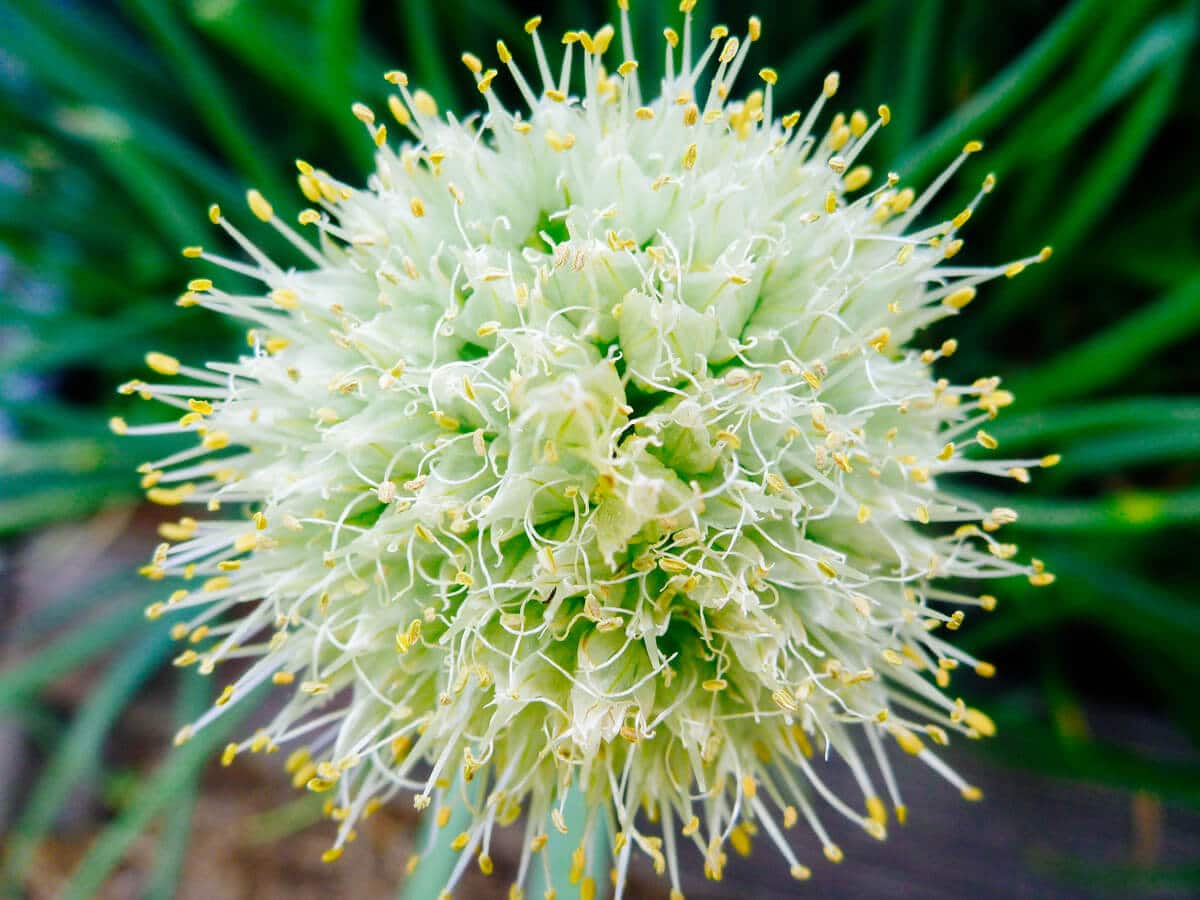
Disclosure: If you shop from my article or make a purchase through one of my links, I may receive commissions on some of the products I recommend.
Recommended onion varieties
Short day onions (require 10 to 12 hours of daylight to bulb)
Intermediate day onions (require 12 to 14 hours of daylight to bulb)
Long day onions (require 14 to 16 hours of daylight to bulb)
This post updated from an article that originally appeared on June 20, 2011.


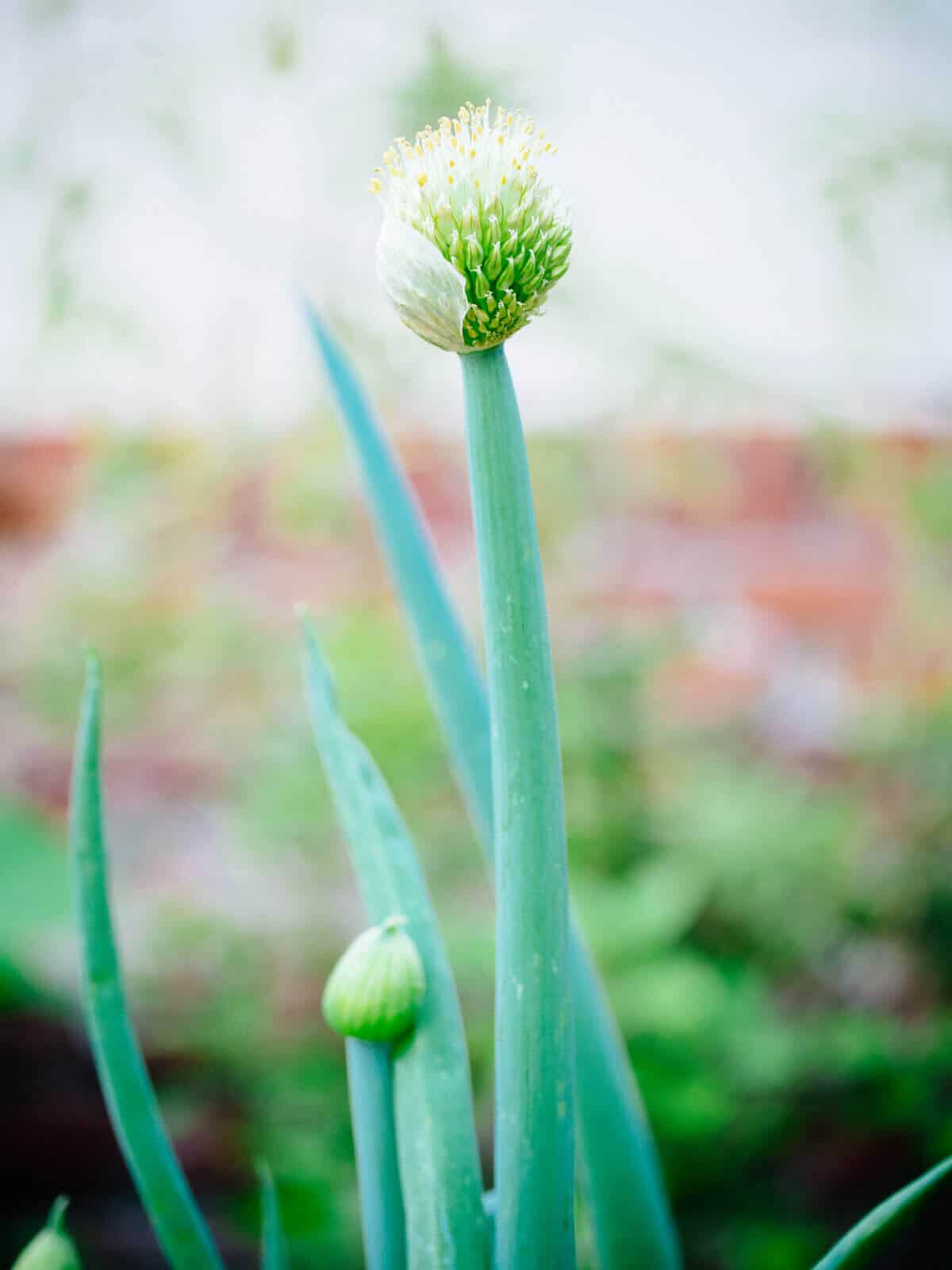













Hi Betty.
Have you ever thought of utting all of your wonderful ideas / tips into a book ?
Or might you already have one ?
Thank you for all of this information! I planted bulbs last year (pre-Covid) and then, with impromptu homeschooling, spouse now working from home, extra home repairs to complete and family to take care of- I forgot all about my garden! Fast forward to this year, and I have 70+ bulbs with flowers and had no idea if I could use them or not. I’ll be harvesting a much tomorrow to sauté, and to make room for a new garden, but I’m so happy to know they won’t go with waste!
Won’t go *to* waste (typos are a norm for me now- my hands don’t text well after moving a shovel all day! LOL
How do we collect seeds? I accidentally left my onions in the ground. I thought they died but they all bolted.
You’ve probably already dealt with them since I’m replying a couple of months after your question, but anyway… After the flower has done its thing, leave it alone until it dries out. You’ll know when it’s time to collect the seeds, because it’ll look like they’re pushing out of the papery leftovers from the flowers (they’re not, really – it’s just that the remains of the flowers are drying out and shrinking). The way I harvested mine was to put a ziploc bag over the flower and gathered it closed at the base of the flower, cut the stalk, then shook the flower head and ruffled it with my fingers through the bag.
I have never seen them flower but it is flowering now – just one inside – how do I collect seeds from it ? Let it die and then shake it into a baggie?
Great information!! Thank you
This is what I did last season and my onions are about to flower now. I think I’ll pull them just because I need the space but it’s nice to know you can leave them in the ground. Thanks for the post! Cheers.
I love the flowers of alliums…cheers to bolting!
I have always wondered why onions didn’t bolt every year… seems so obvious now remembering they are after all – bulbs (I feel so silly!)
Thanks for the tip Linda 🙂
x
LOL don’t feel silly… I thought the same thing! And then I always wondered how people got seeds from onions?! I love unintentional garden discoveries.